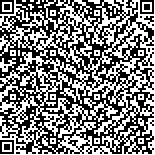| 摘要: |
| 基于有限元理论, 以 2008 年 9 月—2009 年 1 月海上实测的钓钩深度、三维海流数据为基础, 建立并验证了延绳钓三维力学模型, 并利用 Matrix Laboratory (MATLAB)软件进行模型数值计算编程。结果表明: (1) 建立的延绳钓力学模型, 可以较快地计算得出任何三维分层海流作用下延绳钓的三维形状和钓钩的深度; (2) 圆柱体与流向垂直时的阻力系数CN90 与研究对象的雷诺数(Re)和流态有关; (3) 通过成对双样本均值分析 t-检验, 实测深度与数值深度(20%站点的钓钩)无显著性差异(P = 0.43 > 0.05); (4) 利用悬链线方程赋予初值、添加赋值调整程序可提高计算的速度。 |
| 关键词: 有限元分析, 延绳钓, 数值模拟 |
| DOI:10.11693/hyhz201102014014 |
| 分类号: |
| 基金项目:国家高技术研究发展计划(863)资助,2007AA092202 号; 上海海洋大学博士科研启动基金,B-8202-08-290 号; 农业部远洋渔业探捕项目资助,D-8006-08-0058 号; 上海市重点学科建设项目资助,S30702 号 |
|
| NUMERIC MODELING OF THE PELAGIC LONGLINE BASED ON THE FINITE ELEMENT ANALYSIS |
|
SONG Li-Ming1, ZHANG Zhi1, YUAN Jun-Ting2, LI Yu-Wei1
|
|
1.The Key Laboratory of Shanghai Education Commission for Oceanic Fishery Resources Exploitation, The Key Laboratory of Sustainable Exploitation of Oceanic Fisheries Resources, Ministry of Education, Shanghai Ocean University;2.College of Engineering, Shanghai Ocean University
|
| Abstract: |
| To have a better understanding of the fishing depth of the pelagic longline gear, numeric modeling of the longline was conducted. The fishing parameters (e.g. shooting speed of mainline) can be adjusted to deploy the hooks to the water layer where the targeting tuna prefers. As a result, the catch rate of the targeting species would be increased, and bycatch would be decreased. A survey on the tuna longline fishing ground was being conducted from Sep. 2008 to Jan. 2009 in the Indian Ocean. Hook depths were measured by the Temperature Depth Recorders (TDRs), and three dimensional currents at various depths were also measured by the Acoustic Doppler Current Profiler (ADCP). A three-dimensional numerical longline model (3DNLM) was developed using finite element analysis based on 80% experimental data including the three dimensional currents and the hook depths measured by TDRs. The three dimensional current data were assigned to seven depth intervals of 50m (0—50m, 50—100m, …, 300—350m). The coordinates of all the nodes of the longline
(including the float lines, mainline and branch lines) could be calculated by the numerical model, the shape of longline under the water could be obtained, and the hook depth of each hook can also be calculated. The 3DNLM was also verified by the remaining of 20% experimental data by the paired sample t-test. The results indicated that (1) the three-dimensional shape of tuna longline under the three-dimensional currents at various water layer could be calculated by the 3DNLM; (2) the value of the drag coefficient (CN90) might be determined based on the Reynolds number (Re) of the study object and the current condition; (3) there was no significant difference between the TDR measured depth and the numerical calculated depth (P = 0.43); (4) the running speed could be increased by inserting an adjusting programme using the initial values obtained from the catenary curve equation. |
| Key words: Finite element analysis, Longline, Numeric modeling |
